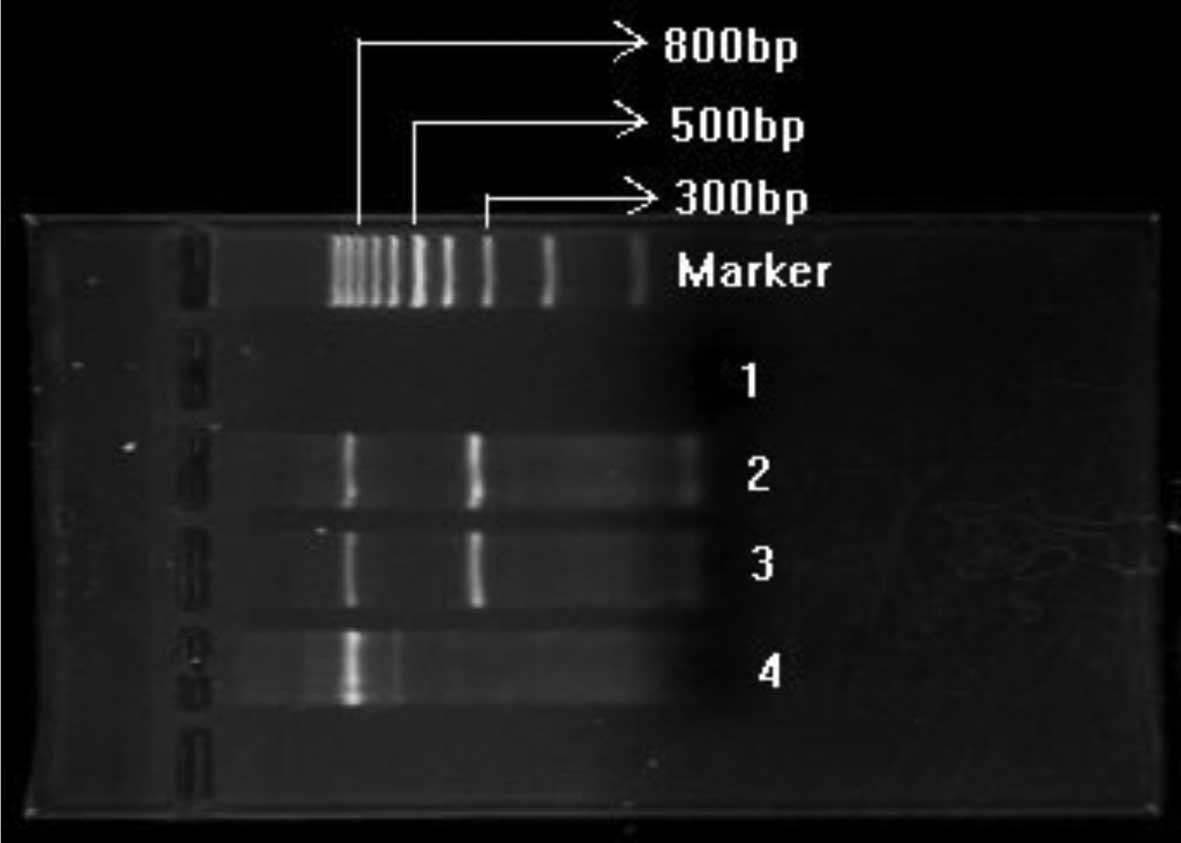Expression of human mammaglobin as a marker of bone marrow micrometastasis in breast cancer
- Authors:
- Published online on: December 22, 2011 https://doi.org/10.3892/etm.2011.429
- Pages: 550-554
Metrics: Total
Views: 0 (Spandidos Publications: | PMC Statistics: )
Total PDF Downloads: 0 (Spandidos Publications: | PMC Statistics: )
Abstract
The aim of the present study was to detect the expression of human mammaglobin (hMAM) mRNA in the bone marrow (BM) of patients with breast cancer and determine the relationship between micrometastasis and clinicopathological parameters as well as selected molecular markers and breast cancer prognosis. The expression of hMAM mRNA in the BM of patients with breast cancer was determined by RT-PCR. The expression of ER, PR and Cath-D in cancer tissues was detected by immunohistochemistry. A positive expression rate for hMAM of 38.2% in 102 patients with stage I-III breast cancer was found. The expression of hMAM was higher in patients with T2-3 (>2 cm) tumors than in those with T1 tumors (≤2 cm) (χ2=19.20, P=0.001) and in patients with stage II or III tumors than in patients with stage I tumors (χ2=15.101, P=0.001). The expression of hMAM in the BM of breast cancer patients categorized as grade 1 was lower than that in those of grade 2 or 3 (χ2=8.522, P=0.014), and hMAM expression was related to the pathological type of tumor (χ2=6.892, P=0.032) and the degree of axillary lymph node metastasis (χ2=14.050, P=0.001). The expression of hMAM in BM was much higher in patients with ER(-) or ER(+) tumors than in those with ER(++ or +++) (χ2=11.800, P=0.003), and those with PR (χ2=8.759, P=0.013). hMAM expression in BM was also significantly positively correlated with Cath-D expression (χ2=6.623, P=0.036). However, no correlation was found between hMAM expression and patient age (χ2=1.056, P=0.304). There was a strong correlation between patients with positive expression of hMAM in the BM and the presence of distant metastases (P=0.009). In conclusion, micrometastasis in the BM correlates with certain clinical pathological parameters and several tumor markers. Patients with positive expression of hMAM in the BM have a greater chance of distant metastasis and poor prognosis. The detection of micrometastasis may be one of the most advantageous markers for predicting the prognosis of breast cancer.










